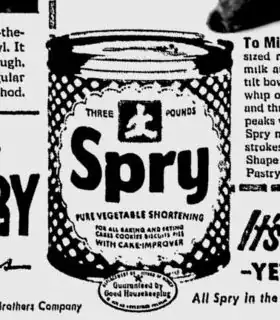I'm interested in trying to make this "water whip" pie crust. Unlike a typical pie crust where lard/butter/shortening is cut into the flour, the shortening is apparently melted and whipped before the flour is added. I'm curious to try it. But the method will only work with a particular brand of shortening (allegedly):
It's Spry's easy "Water-Whip" Method.... This time-saving method is possible only because Spry is homogenized -- pre-creamed to mix directly with liquids.
The recipe is from ~1950 and Spry shortening isn't around anymore. I am wondering whether another shortening (Crisco, etc.) would work in its place, or perhaps even another fat (butter, lard) -- is there really something special about Spry, or was that just a marketing claim?
